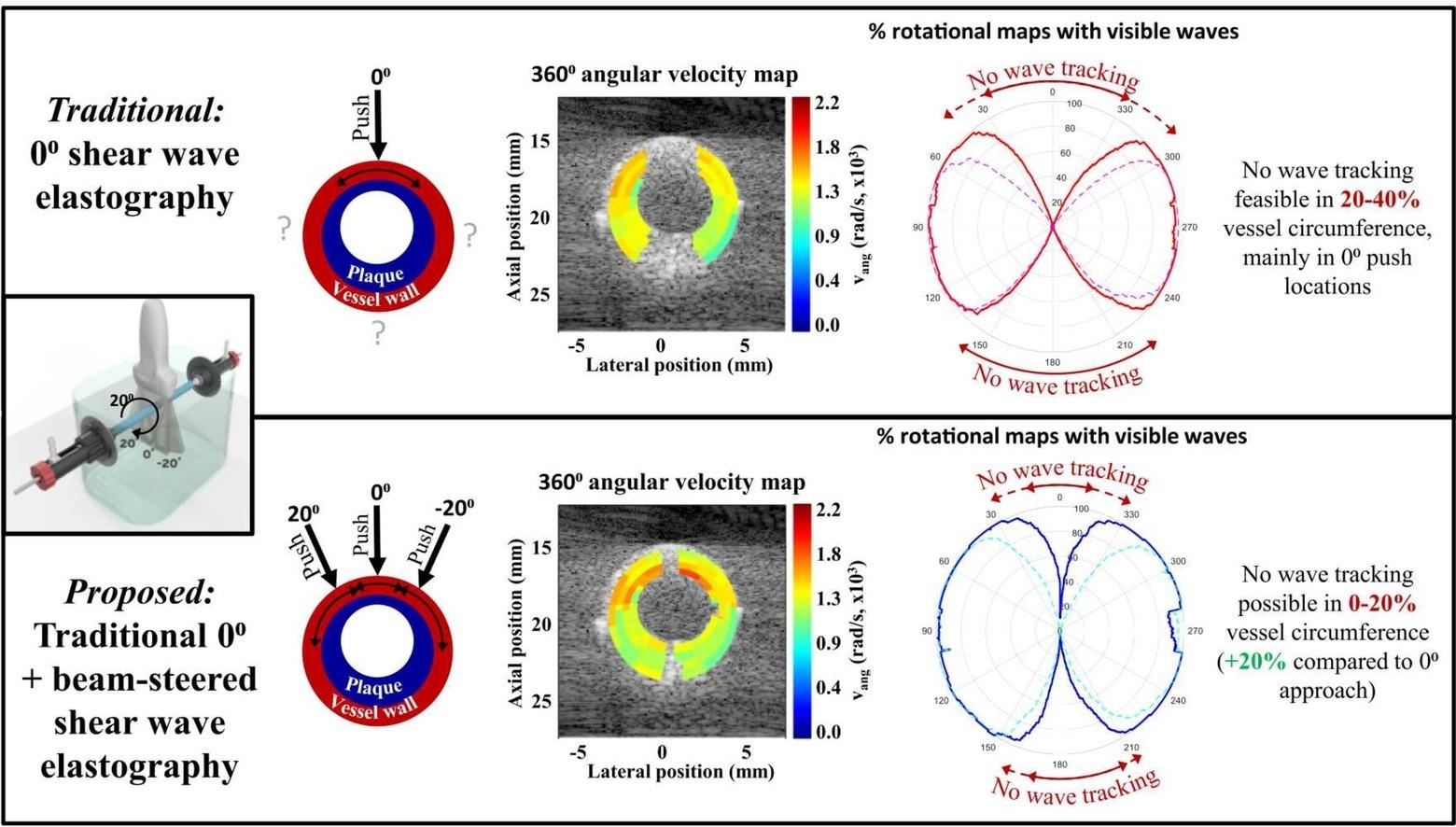Extending arterial stiffness assessment along the circumference using beam-steered ARFI and wave-tracking: a proof-of-principle study in phantoms and ex vivo
JT Pruijssen, S Fekkes, J Menssen, CL de Korte, HHG Hansen
Background
To fully quantify arterial wall and plaque stiffness, acoustic radiation force impulse (ARFI)-induced wave-tracking along the entire vessel circumference is desired. However, attenuation and guided wave behavior in thin vessel walls limits wave-tracking to short trajectories. This study investigated the potential of beam-steered ARFI and wave-tracking to extend group velocity estimation over a larger proportion of the circumference compared to conventional 0° ARFI-induced wave-tracking.
Methods
Seven vessel-mimicking polyvinyl alcohol cryogel phantoms with various dimensions and compositions and an ex vivo human carotid artery were imaged in a dedicated setup. For every 20⁰ phantom rotation, transverse group wave velocity measurements were performed with an Aixplorer Ultimate system and SL18–5 transducer using 0⁰/20⁰/−20⁰-angled ultrasound pushes. Transmural angular wave velocities were derived along 60⁰-trajectories. A 360⁰-angular velocity map was composed from the top-wall 60⁰-trajectories 0°-data, averaged over all physical phantom rotations (reference). For each phantom rotation, 360⁰-angular velocity maps were composed using 0°-data (0⁰-approach) or data from all angles (beam-steered approach). Percentages of rotations with visible waves and relative angular velocity errors compared to the reference map as function of the circumferential angle were determined for both approaches.
Results
Reference 360°-angular velocity maps could be derived for all samples, representing their stiffness. Beam-steering decreased the proportion of the circumference where waves were untraceable by 20% in phantoms and 10% ex vivo, mainly at 0° push locations. Relative errors were similar for both approaches (phantoms: 10–15%, ex vivo: 15–35%).
Conclusion
Beam-steering enables wave-tracking along a higher proportion of the wall circumference than 0⁰ ARFI-induced wave-tracking.
Graphical Abstract

